Friday, 12/12/2008: Samburu National Reserve – Lake Baringo
After these amazing days full of elephantine and other adventures it was not easy saying farewell to Samburu, although we knew that many more adventures lay ahead of us. We had decided to drive to Lake Baringo via Wamba, rather then back to Isiolo and along the tarmac road to Nakuru. The whole drive would be on dirt tracks, so we left early in the morning. This time our car was even more full than normal, as Abu, the one-eyed mechanic, had asked us for a lift to his family home in Maralal, which was about half way to our destination. For Charles it seemed to be more important to have some company than to have space, so the two of them squeezed onto the only remaining seat in the back of the car. On the way to the gate, we met a last family of elephants, so we could say farewell to them. For the rest of the day we saw only dik-diks and zebras.
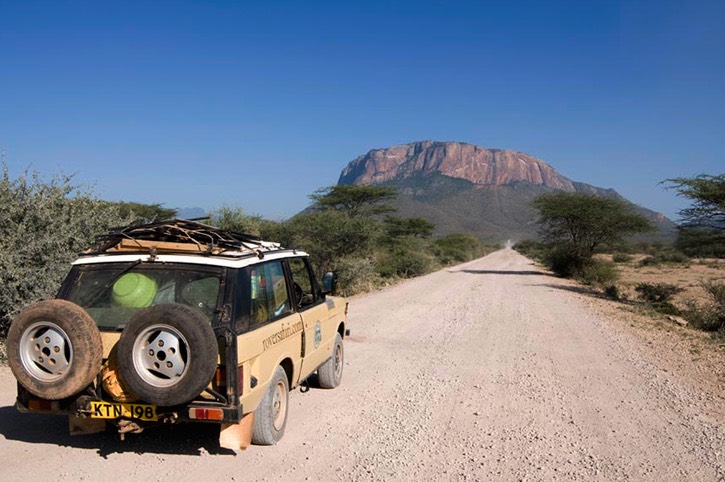
Around mid morning we arrived at a spot where we had a great view of the Ewaso Ngiro River in the valley below, and Abu made sure that we stopped at the one place where we had to pay for it! Around lunchtime we arrived in Maralal, where we dropped off Abu, filled up the car at a very funky little filling station with a female attendant and continued on down the road. Not much later we had yet another flat tyre, fortunately just outside the main entrance to Mugie Ranch. Shame that Abu wasn’t there any longer, he could have helped, especially as it turned out later that he had ripped us off by only putting two patches on the inner tube and charging us for three! That was the last time we give that guy a free lift! But being used to changing tyres by now, we got it done quickly and the security guys from Mugie even organised a bowl full of water to clean ourselves up afterwards. Nevertheless, Charles was pretty cross with Abu!
The drive took quite a bit longer than expected and sometimes the tracks were not easy to recognise. We were glad when eventually we could see Lake Baringo in the distance, but the shorter route we had seen on a map eluded us, so we had to drive another two hours through Pokot country before reaching the lake. In Kampi ya Samaki we were immediately surrounded by locals, who all wanted to sell us a boat trip on the lake. And they wanted us to go immediately. They didn’t take no for an answer and didn’t want to understand that we had no intention of going for a boat ride after an eight hour ride in the car! In the end we made our escape without agreeing to any bookings and arrived at Ma Robert’s campsite right on the lakeshore. We found a nice spot far enough away from the lakeshore so that we wouldn’t get into conflict with any browsing hippos that regularly wander through the campsite at night. But we did see a hippo walking along the shore while we had a cold drink at the bar, and as it turned out, that would be the only hippo we would see emerging from the waters of Lake Baringo.
Saturday, 13/12/2008: Lake Baringo
We had hoped to hear some feeding hippos during the night, but all we could hear was the discothèque in Kampi ya Samaki. It turned out to be Independence Day and everybody was out late celebrating. Lake Baringo is one of only two freshwater lakes in the Rift Valley, and its water levels have varied greatly over the last few years. When Mick last visited some years ago, the water levels were very low, but this time it had reached the trees again and it wasn’t easily possible to walk right along the lakeshore. Therefore, we only went for short walks on the campsite grounds, where we could watch many different bird species, such as go-away birds, superb starlings, weaver birds, mousebirds, paradise flycatchers, barbets and many more. The barbets would land on the wing mirrors of the car, see their own reflection in it and then manically attack their supposed opponents. We could always tell when they were around by the loud sounds of beaks hitting glass. At times we were quite worried whether our mirrors would survive these attacks.
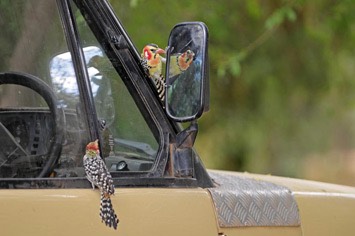
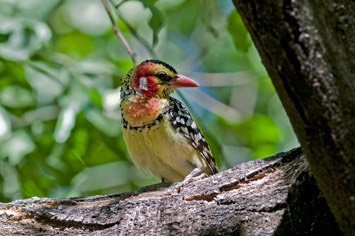
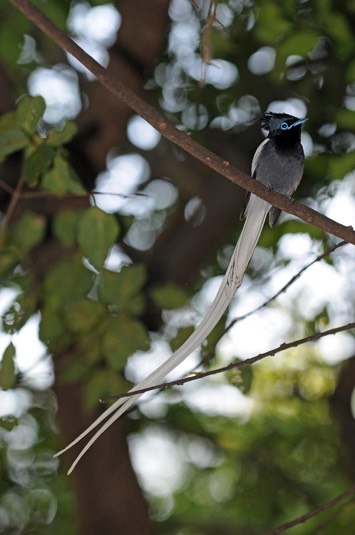
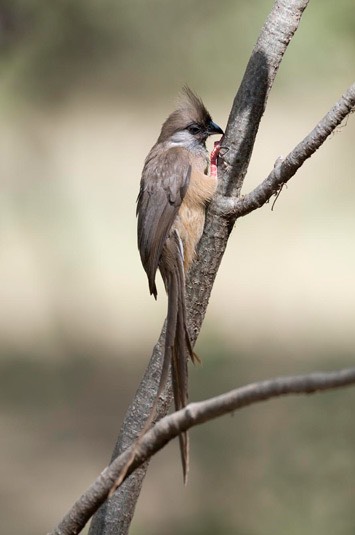
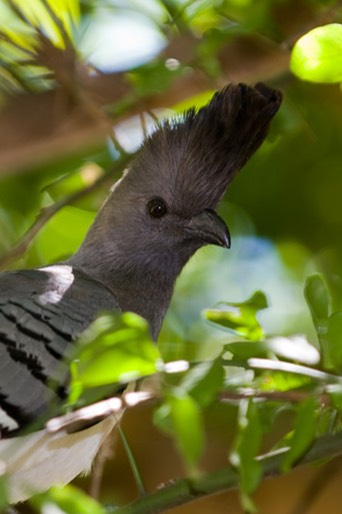
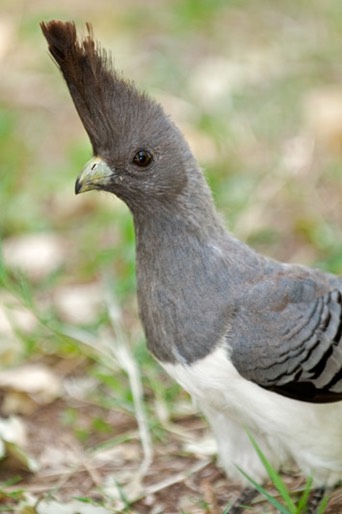

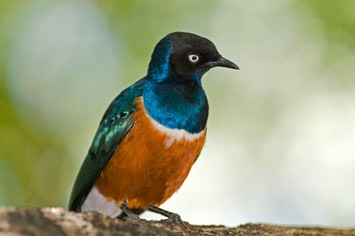
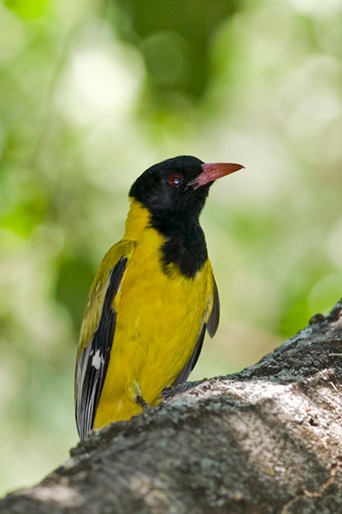
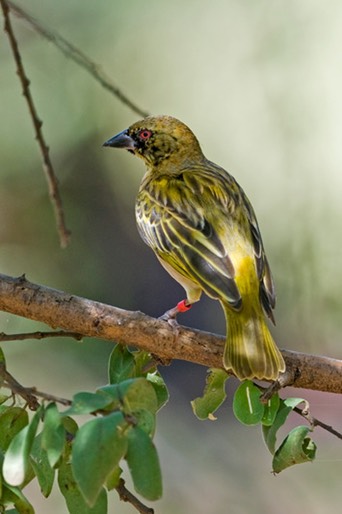
We also went for a walk in the gardens of the neighbouring Baringo Club, where one of the workers showed us a large Verraux’ eagle owl in one of the trees. Unfortunately, we had left our camera in the camp! We stayed for a drink and heard that this spectacularly-situated lodge currently had no guests whatsoever. The effects of the troubles after the elections could still be felt in many places and tourist numbers were extremely low. We also spotted some crocodiles on the lakeshore and the occasional passing hippo in the lake. Overall, we used our time at Lake Baringo to relax and not do very much at all after the fairly exhausting days in Samburu.
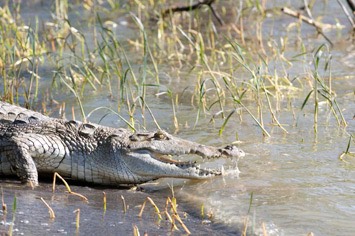
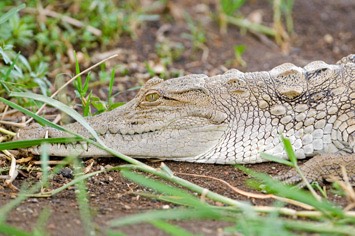

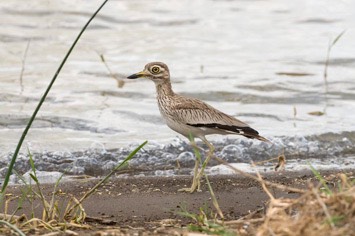
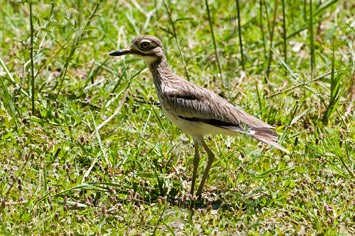

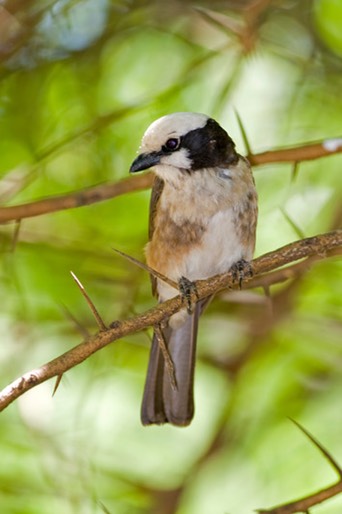
Sunday, 14/12/2008: Lake Baringo
The second day in Baringo started with a surprise for us: Charles served us breakfast dressed in a snow-white and ironed chef’s jacket! It seemed somewhat surreal, but he was very proud. He thought it was a suitable place to wear it after the dusty Samburu campsite. As we spent most of the day in the campsite, we could observe and marvel at his cooking skills, such as his improvised bush oven. He had brought two big baking trays. One went straight onto the charcoal fire, and after placing bread and pizza in it, the other one was inverted over it, and topped with some glowing charcoal. This way the pizza and bread got baked with top and bottom heat! How inventive! The results were very tasty and it also meant that we could have fresh bread, even at times when we couldn’t buy any.
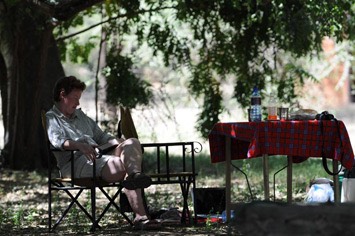
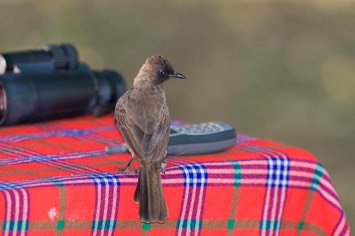
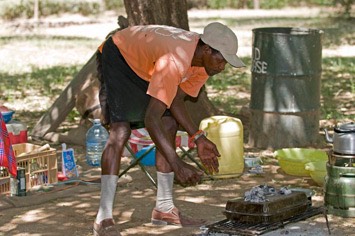

During a stroll in the campsite grounds, we came across the camp’s famous huge tortoise. Apparently Ma Roberts was given this tortoise when she was very young, and, as she was now in her eighties, this tortoises must be pretty old, too!
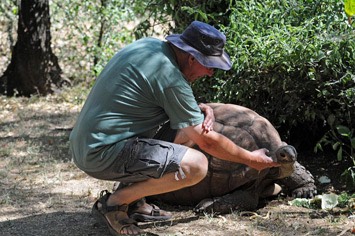
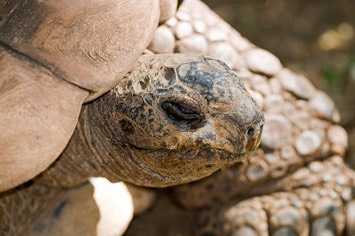
Monday, 15/12/2008: Lake Baringo – Nakuru
After a special recommendation from Charles, we decided to change our original plans and visit the Masai Mara after all. When planning our trip, we had decided not to go, as we wanted to avoid the main tourist trails. But Mick was very keen to see some cheetahs, which he had never seen in the wild before, and, as we had not been able to find any in Samburu, the Masai Mara seemed to be our best bet. But as the Mara is a long way away from any bigger town, we had to squeeze in a shopping day to top up our food reserves. We decided to do the shopping in Nakuru and we were able to spend the night in a guest room in Rover Safari’s headquarter where we had rented our car. The drive from Lake Baringo to Nakuru took only around two hours and at lunchtime we arrived in the hustle and bustle of Nakuru town. After our time in the bush we were not used to so many people and were glad when we arrived at the guesthouse, stocked up with provisions. It was good to meet up with all the people with whom we had corresponded by email. We spent the rest of the day relaxing, having a siesta and downloading and looking through our many photos from Samburu.
Tuesday, 16/12/2008: Nakuru – Masai Mara National Reserve
Our departure from Nakuru was unexpectedly delayed, as we suddenly couldn’t open the passenger door of the car! In the previous few days it had to be done through the open window from the outside, but now it was completely stuck. Fortunately, this happened in the right place, with the Rover Safari mechanics at hand. One hour and a fixed door later, we set off. The first half of the drive was on tarmac road, but this turned into a very rough piste after the town of Narok. The closer we got to the Mara, the more degraded the landscape became. The Masai measure their wealth by the number of cattle, goats and sheep they own, but this meant that there were very large numbers of domestic animals in need of grazing. Everywhere was totally overgrazed and some stretches resembled a desert. Compared to the closely related Samburu tribe, the Masai seemed rather aloof and not always friendly. The children often beg and the adults want to be paid for pretty much anything. We experienced the latter at first hand in the campsite, which was run by Masai. They were very friendly, but also insistent that we bought firewood from them, hired an askari (a night guard), an extra helper for general purposes, a guide for the drives in the reserve and went to visit a local Masai village! Everything, obviously, for a “very good price”. Much to their displeasure, we declined all of these offers and settled in our chosen area of the campsite, which we had all for ourselves. We even had showers with solar heated hot water and proper sit-down toilets! What a luxury!
Back to Part 2 Go to Part 4